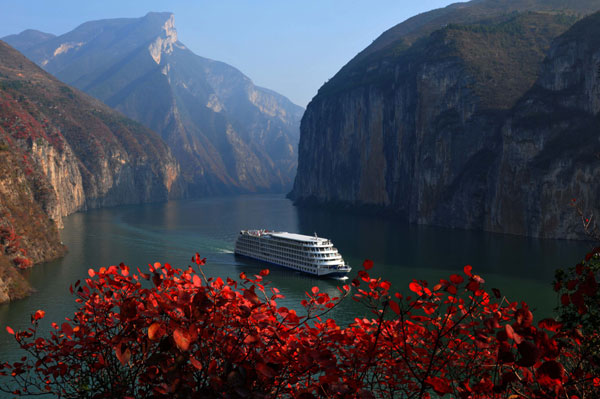Tragedy may prompt cruise industry revamp
By Tan Yingzi (China Daily) Updated: 2015-06-17 07:49
|
A cruise liner sails through a section of the Three Gorges on the Yangtze River in 2011. Zhou Hui / for China Daily |
The horrific loss of life in the Eastern Star disaster highlighted a range of problems facing tour operators on the river. Now, some experts are calling for a root and branch reorganization of the industry. Tan Yingzi reports from Chongqing.
As the longest watercourse in China and the third-longest on the planet, the Yangtze River is famous for its long, rich history and beautiful scenery. During the Qing Dynasty (1644-1911), emperors frequently boarded wooden ships to cruise along the river and inspect their territory.
In recent years, cruises on the Yangtze have grown in popularity, and at one point they were as popular as those provided by operators on the Nile in Africa, the Mississippi in the United States and the Rhine and Danube in Europe.
However, the Eastern Star tragedy has cast a shadow over an industry that's already in the grip of a downturn. On the night of June 1, the cruiser, owned by Chongqing Eastern Shipping Corp and carrying 454 passengers and crew, capsized in the Hubei province stretch of the river en route from Nanjing in Jiangsu province to the central municipality of Chongqing.
The final death toll has been put at 442. The ship's captain and chief engineer, who were among just 12 survivors, have been detained by the authorities and an investigation is continuing.
The tragedy resulted in a number of tour groups canceling cruises on the river, citing safety concerns, and cruise operators expect to see low visitor numbers for the rest of the season.
That slowdown may force a long-needed revolution in the industry, according to observers. "This awful tragedy may provide an opportunity for China's cruise industry to cool down and think," said Wang Ning, a travel expert on the Yangtze River at Chongqing Technology and Business University. "It's time to revamp the whole industry and upgrade cruise trip services," he said.
- Govt encourages people to work 4.5 days a week
- Action to be taken as HIV cases among students rise
- Debate grows over reproductive rights
- Country's first bishop ordained in 3 years
- China builds Tibetan Buddhism academy in Chengdu
- Authorities require reporting of HIV infections at schools
- Typhoon Soudelor kills 14 in East China
- Police crack down on overseas gambling site
- Debate over death penalty for child traffickers goes on
- Beijing to tighten mail security for war anniversary








